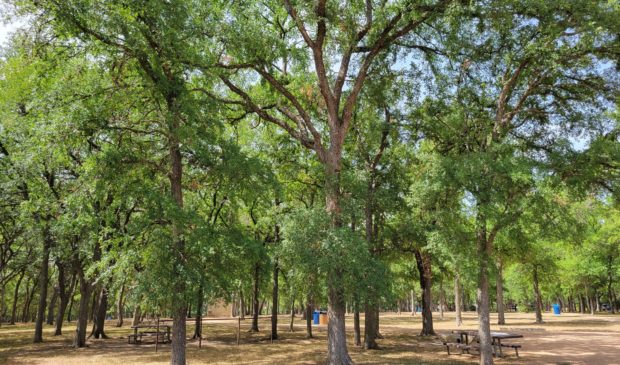Planning Commission postpones decision on parkland fees for commercial development
Tuesday, July 19, 2022 by
Jonathan Lee Should new commercial developments contribute land and/or money for new parks? If so, how? These were the questions the Planning Commission considered last Tuesday related to a proposed rule that would make offices, retail, hotels and industrial buildings include on-site park space or pay a fee to fund new parks nearby.
The push for commercial parkland dedication builds on the city’s existing parkland dedication ordinance for residential development. The commercial version works in a similar way, using a formula to estimate increased demand for parks resulting from development:
The commercial requirement would use the current formula of 9.4 acres of parkland per 1,000 new users of the parks system. The commercial uses would be calculated based on the number of employees per square foot, discounted by hours of operation, occupancy rate, and commuter percentage rates.
The idea for commercial parkland dedication first came from the Parks and Recreation Board. The board voted in 2020 and again in 2022 to recommend City Council adopt the policy. In April, Council began the process to put the policy into city code.
The fee-in-lieu is tied to the cost of land for new parks and is updated every year as land values change. Last year, skyrocketing land prices caused the residential fee to double, drawing criticism from housing affordability advocates who argued that the fee would increase the cost of building and, therefore, the price of new homes.
While commercial fees wouldn’t be passed on to renters and homebuyers in the same way, they still came under criticism Tuesday for increasing the cost of building.
“This study just came out showing that Austin has the highest fees in the state by far when it comes to residential construction,” Commissioner Greg Anderson said. “It looks like we’re trying to do the same to commercial, office with the same broken formula.”
“I don’t believe the formula is broken,” Randy Scott with the Parks and Recreation Department responded. “I believe the formula is now starting to reflect the actual cost for the Parks and Recreation Department to provide land and park facilities for new residents that are coming to Austin.”
Staffers added that the fee would equal around 0.42 percent of a project’s construction costs.
Commissioner Jennifer Mushtaler had the opposite concern from Anderson. “I guess I’m concerned that we’re discounting too much,” she said.
Because the fees must be spent within a certain distance of the development, Commissioner Claire Hempel wondered how they work downtown, where land is scarce and expensive. Staffers said that after a year, if there is no land available to purchase, the city may spend on park improvements or purchase parkland elsewhere.
Commissioner Awais Azhar argued that the parkland formula should account for the trend toward more remote work, which likely means decreased demand for park space in commercial developments.
Parks staffers acknowledged that the need for new parks as a result of commercial development is less straightforward than it is for new residential development. At the meeting, they ran through the legal precedent for the ordinance, which requires a direct connection – or “essential nexus” in legalese – between increased park use and new commercial development.
“The essential nexus between commercial development and park use is established in part by recognizing the measurable spike in park usage before and after work,” Robynne Heymans with PARD said.
Anderson argued that the ordinance may be on shaky ground – not only legally but also politically. “Parks are amazing, but when you have these out-of-step fees that are just doubling year after year, and then we’re using that same formula to go over here, the state’s just gonna take that power away from us,” Anderson said.
With many remaining questions about the proposed ordinance, commissioners voted to postpone a recommendation until Aug. 9. A public hearing at Council was scheduled for July 28, though the Planning Commission’s postponement may push that date back.
The Austin Monitor’s work is made possible by donations from the community. Though our reporting covers donors from time to time, we are careful to keep business and editorial efforts separate while maintaining transparency. A complete list of donors is available here, and our code of ethics is explained here.
You're a community leader
And we’re honored you look to us for serious, in-depth news. You know a strong community needs local and dedicated watchdog reporting. We’re here for you and that won’t change. Now will you take the powerful next step and support our nonprofit news organization?









